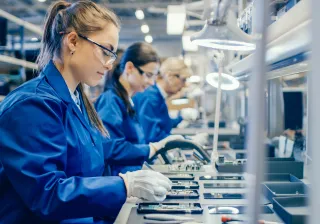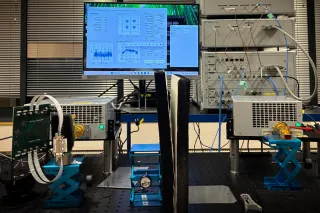COVID-19 pandemic has forced us to change our daily life, change the way we work and it has changed the business. Isn’t it time to change our idea of manufacturing?
Remanufacturing is the manufacturing process of returning a used product to at least its original performance with a warranty that is equivalent to or better than that of the newly manufactured product. Customer can considered a remanufactured product same as a new product. The idea of remanufacturing is to get various savings compared to traditional manufacturing by retaining as much as possible from the used product in a new product.
The idea is not new neither very radical as such. Successful remanufacturing business has been practiced over decades. ERN project have estimated that remanufacturing generated around 30 €bn in Europe across nine key sectors and is expected to grow between 46 €bn and 100 €bn (ERN, 2017). However, quite few companies in manufacturing industry still can see remanufacturing as a premise for manufacturing business or even having any significant role there. Only 2% of products in EU are remanufactured. That is how remanufacturing is a new and radical idea.
Facts and false beliefs about remanufacturing
We have shared information about remanufacturing and collaborated with multiple companies during several years. It has become evident that many misconceptions are common concerning remanufacturing. Our aim here is to dispel most common misconceptions:
Remanufacturing is less profitable than traditional manufacturing - WRONG
There are several examples where remanufacturing is actually more profitable than traditional manufacturing. Circular Economy Evidence Building Program has estimated that a remanufactured product demands between 50 % and 90 % of the cost of a new product (Walsh et al 2015). In many cases, the option for better profit margin is partly used for the benefit of customer by offering new remanufactured products at lower prices than other new products. Remanufacturing can offer also indirect business benefits: new markets, better customer service and commitment, and better image.
Remanufacturing is done for environmental reasons - YES, and ..
With remanufacturing, it is possible to substantially save raw materials and energy as well as reduce greenhouse gas emissions. Reduction down to 11% of original material and 6% of original energy consumption, and 10% of original Global Warming Potential have been reported (Afrinadi et al. 2017, Bazan et al 2015, Cooper & Gutowski 2017, Steinhilper 2001). In the other words, it means up to 94% reduction. Reduction of waste or recycling is evident because of lifetime extension. Remanufacturing typically has much better environmental effect than recycling. However, most of the early successful remanufacturers have started remanufacturing because of pure business reasons. Increasing demand for sustainability is just another important reason to start remanufacturing.
Remanufacturing is not included in circular economy - WRONG
For us, this is quite odd misconception since in every comprehensive specification of circular economy, remanufacturing is one of the main strategies. This misconception may be based on that recycling is so much on view today and, thus, circular economy is mostly associated with recycling. Reuse and second-hand trading is another concept tightly associated with circular economy. Anyway, remanufacturing is one of the key strategies in circular economy.
Remanufacturing is just another word for refurbishment - WRONG
Remanufactured product is always as good as a conventionally new product – or even better. The manufacturer assures the quality by the remanufacturing process and guarantees it for the customer. Refurbished product may or may not be as good as new even though it is aimed to be always good for its use.
What if remanufacturing would dominate manufacturing?
A vision: Imagine that all the products on the market would be remanufactured. That conventionally manufactured new products would be rare exceptions. That manufacturing would factually be remanufacturing. You might protest that it would stop the progress. Not necessarily. Upgrading in remanufacturing is a serious option. Even now, a remanufactured product may be better than a conventionally manufactured new counterpart is. Remanufacturing is more flexible process and therefore improved components may appear earlier in remanufactured products. Moreover, it is very likely that a remanufactured product is better than the original used product when it was new, because the defects related to the product have been fixed during the lifetime of the product. Examination of the products that are returned for remanufacturing enables still further development of the product.
Remanufacturing could be taken as a main – or even the only – strategy of manufacturer to produce new products. We would call that strategy Manufacturing as remanufacturing. This would mean that the product is gradually upgraded in remanufacturing instead of developing and manufacturing completely new product models. In product development, this is already quite common practice, but in manufacturing, it is rare. In the most complete form it would mean that the product is designed in a way that every feature of the product can be upgraded without replacing the whole product.

Design for remanufacturing - challenge and opportunity
Naturally, using the Manufacturing as remanufacturing strategy requires that the product, product development, production and business model are designed especially for remanufacturing. Manufacturing as remanufacturing is a radical concept and it is not easy to achieve. The case specific solutions should always be examined, because an all-purpose model for remanufacturing does not exist. It is worth to aim to, still. And remanufacturing may be started with the existing products, too. A product that is most promising for remanufacturing may be selected at first and remanufacturing business and process can be designed for that. Such start gives valuable experience and still can bring additional customers and market share, better profit, better customers service, or response to sustainability expectations.
There is lot of additional information and support for remanufacturing development available. See, for example CARED remanufacturing business and operations design bootcamps and webinar on why and how to get started with remanufacturing (11.12.2020) - more information and registration here.
Training and support for remanufacturing has been developed in EIT RM funded project called CARED: Catalyse Remanufacturing Through Design Bootcamp. This blog has been written together with other project partners Helmi Ben Rejeb, Grenoble INP, and David Peck & Juan Azcarate Aquerre, TU Delft






